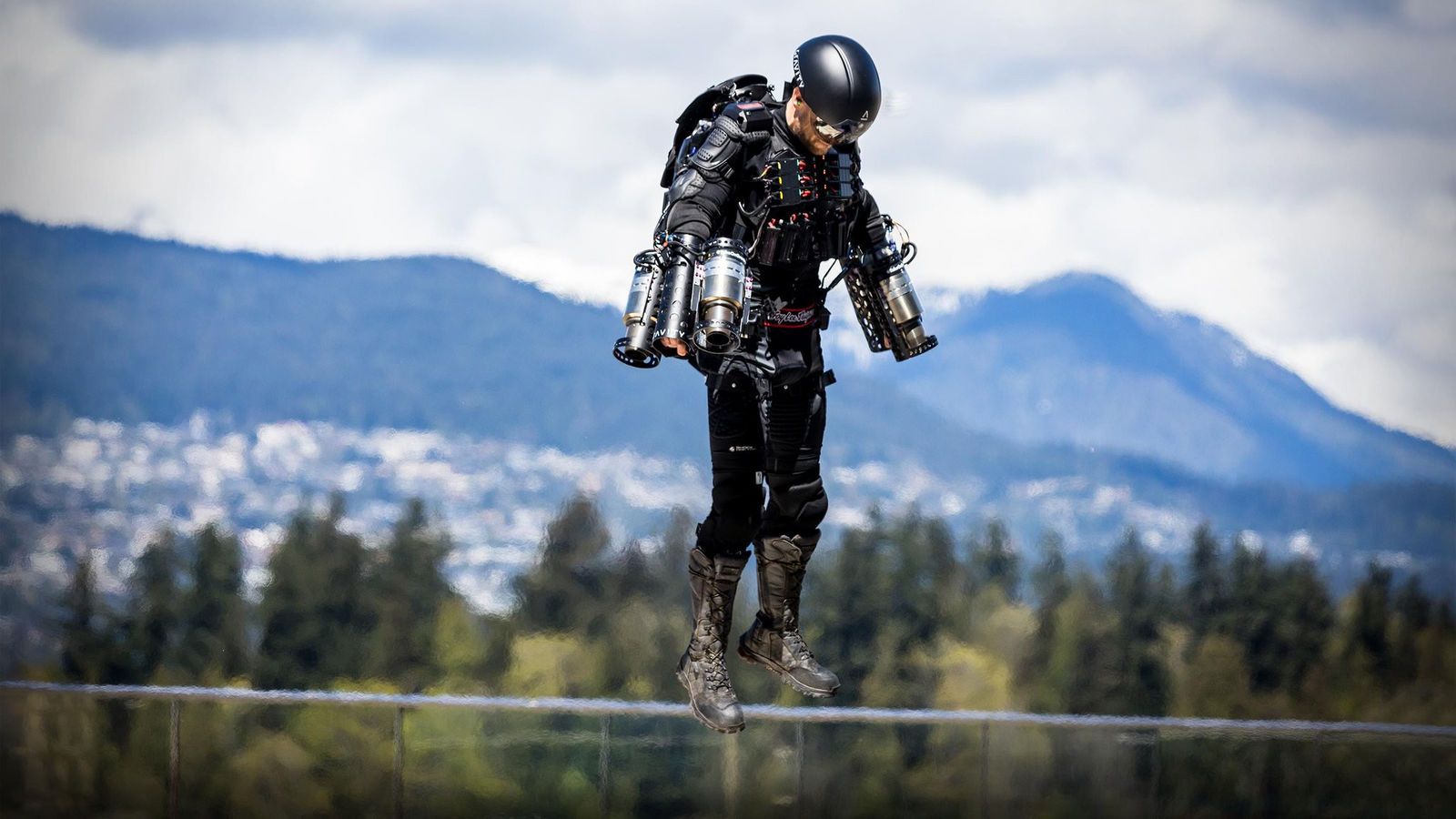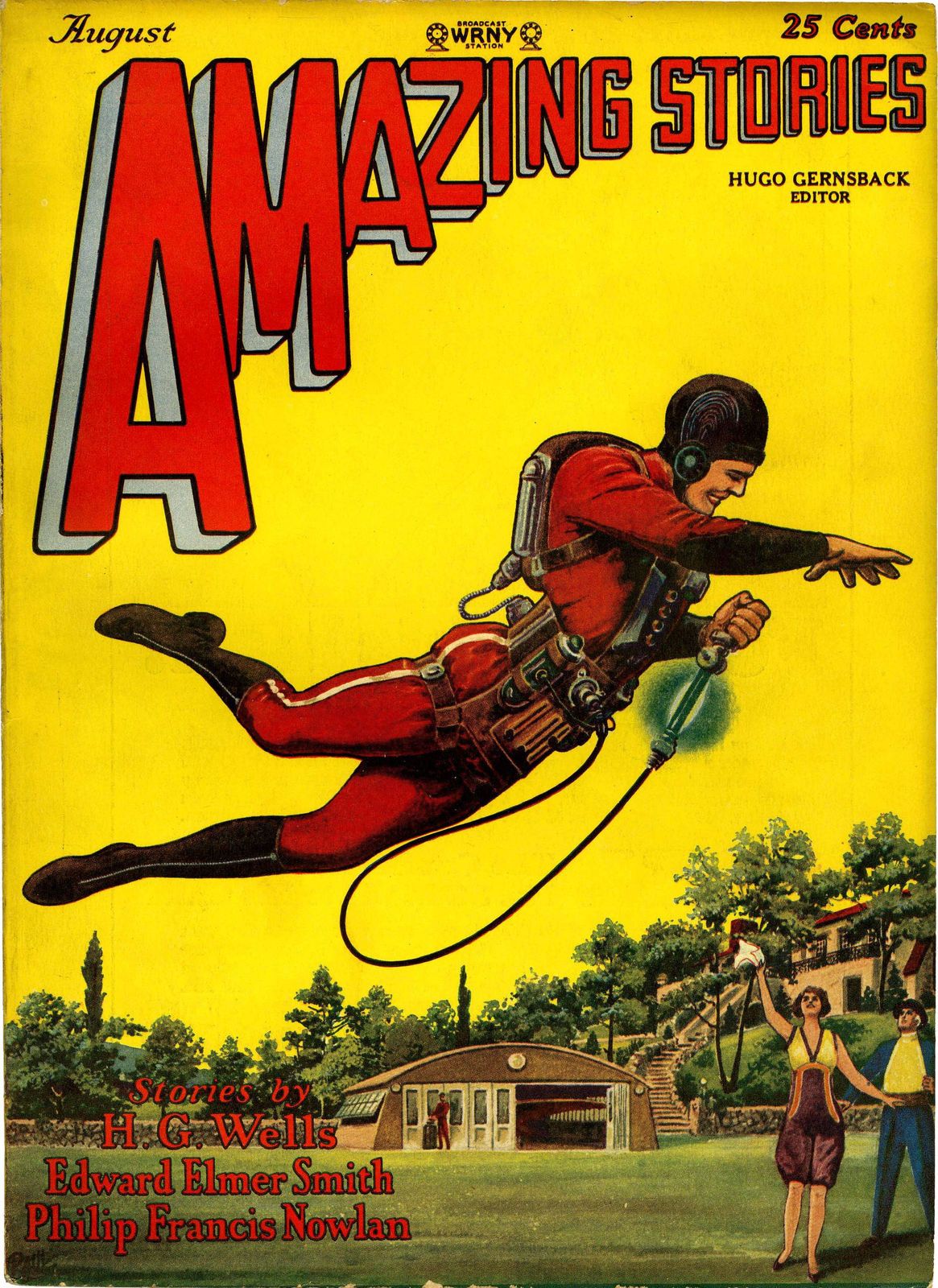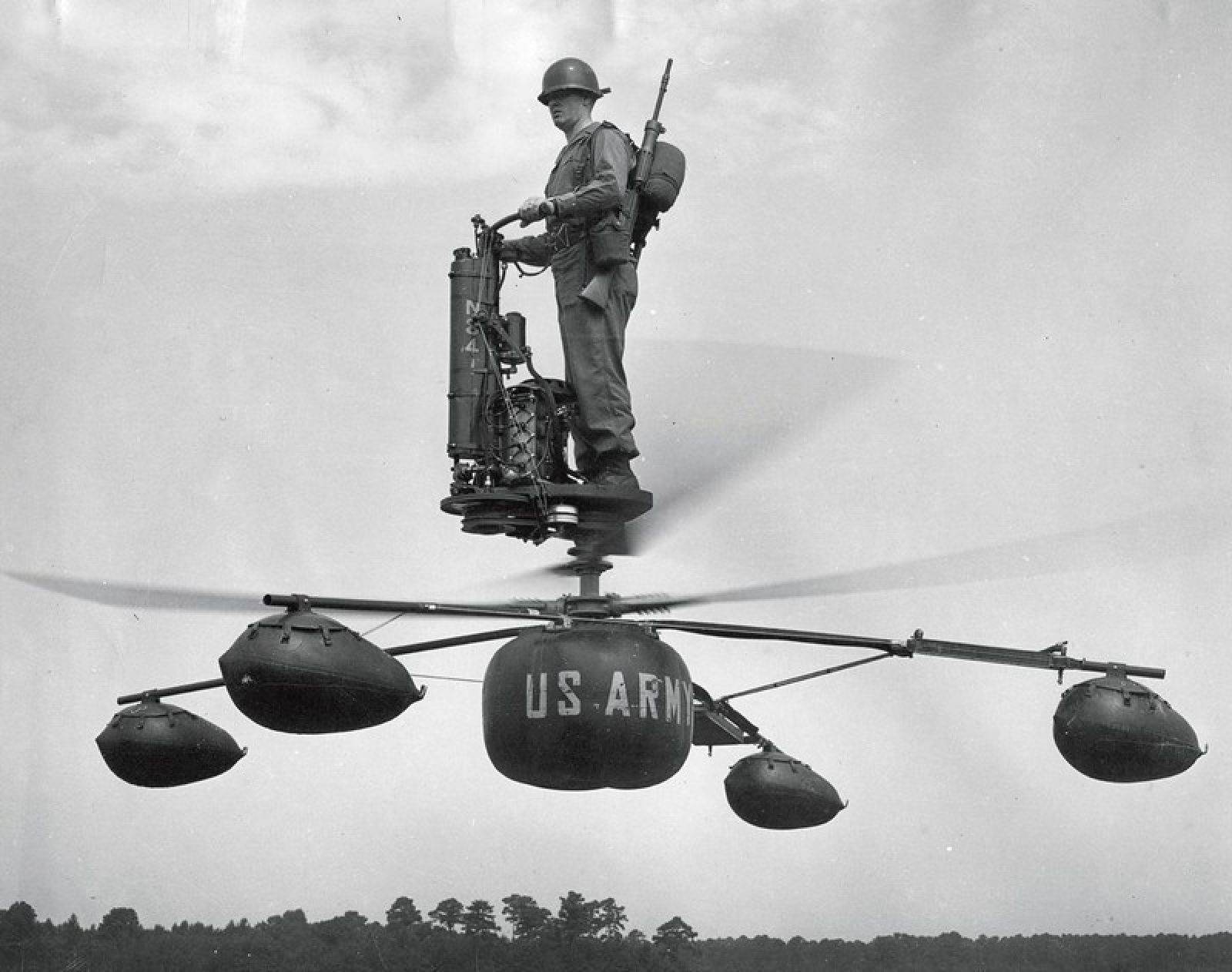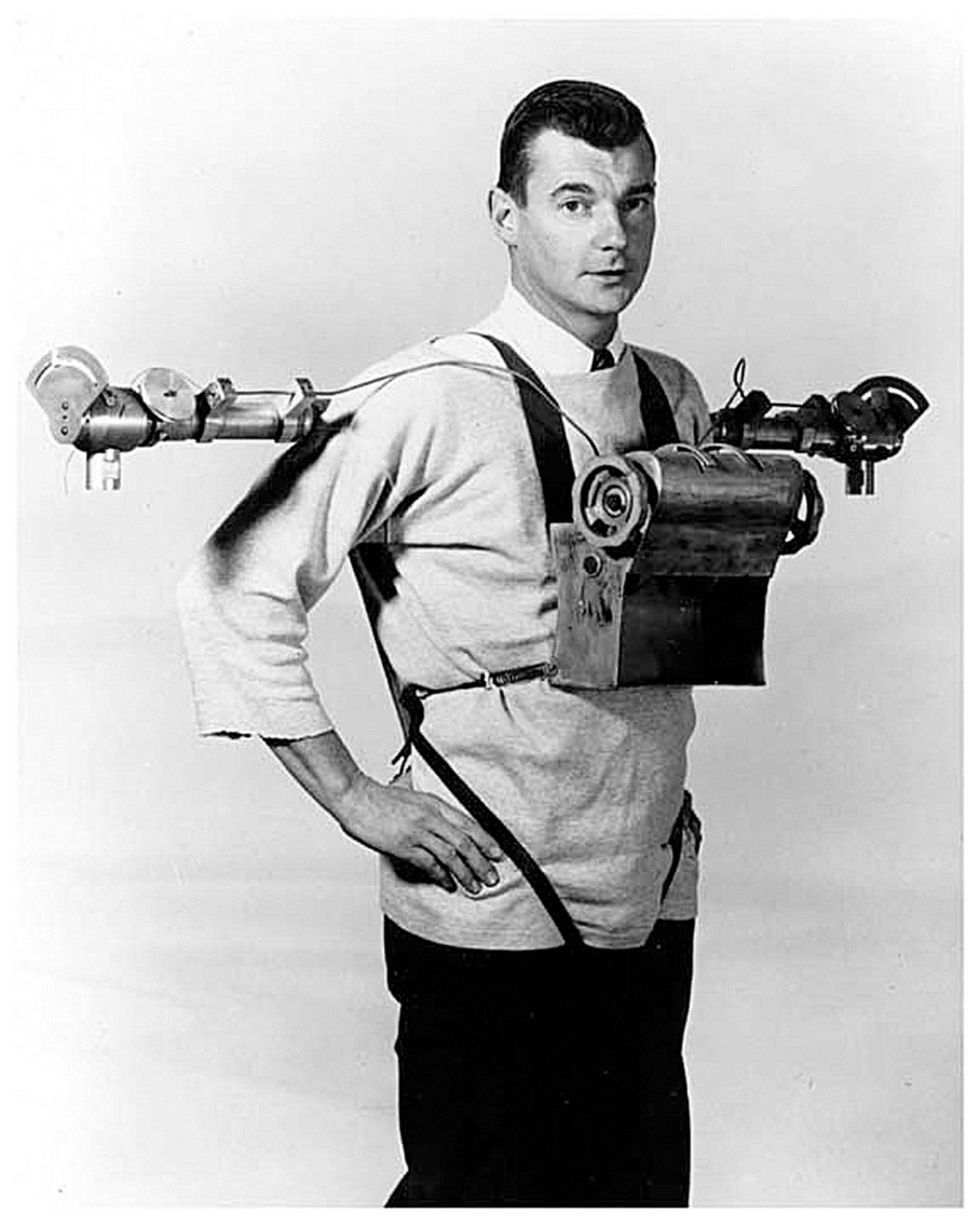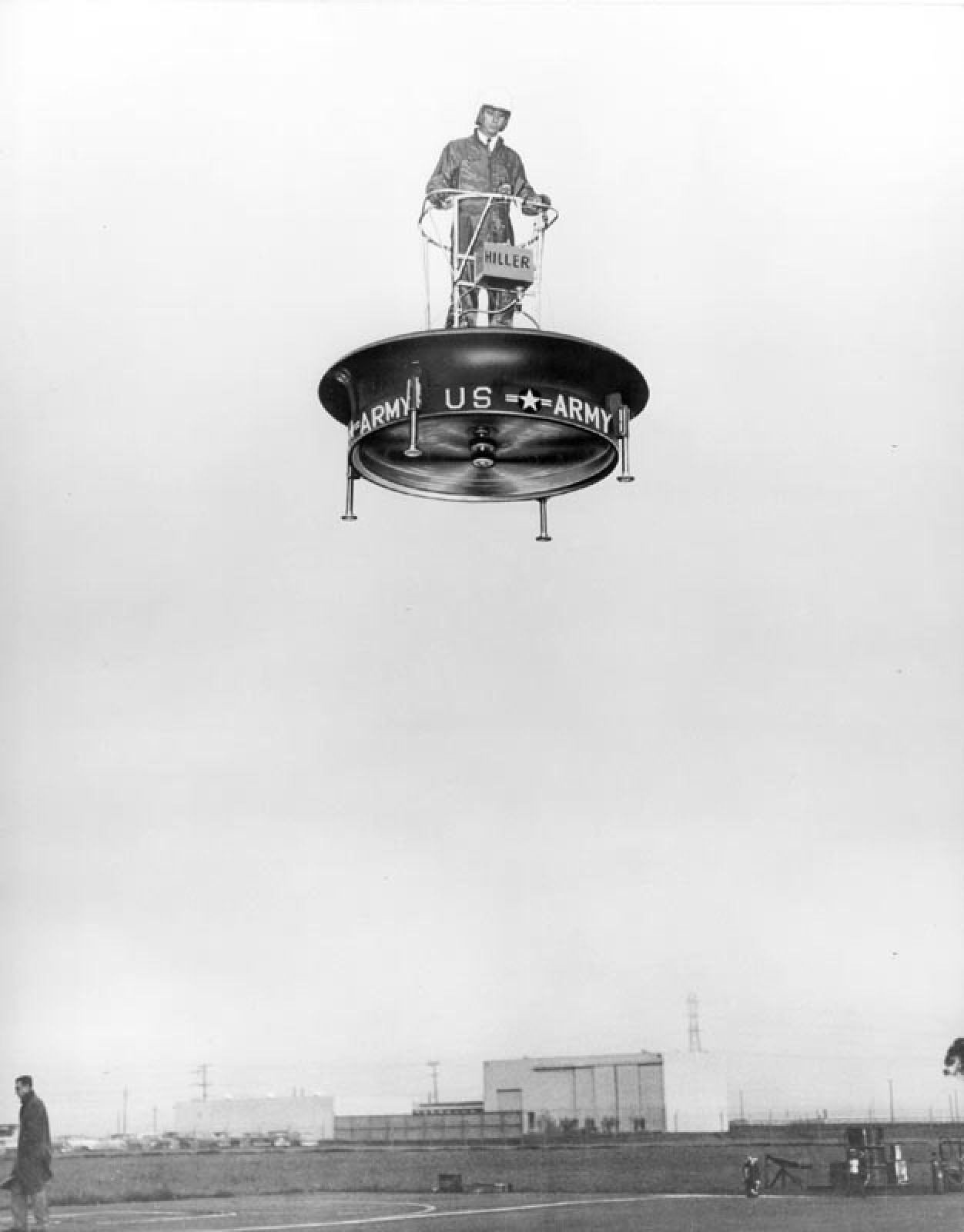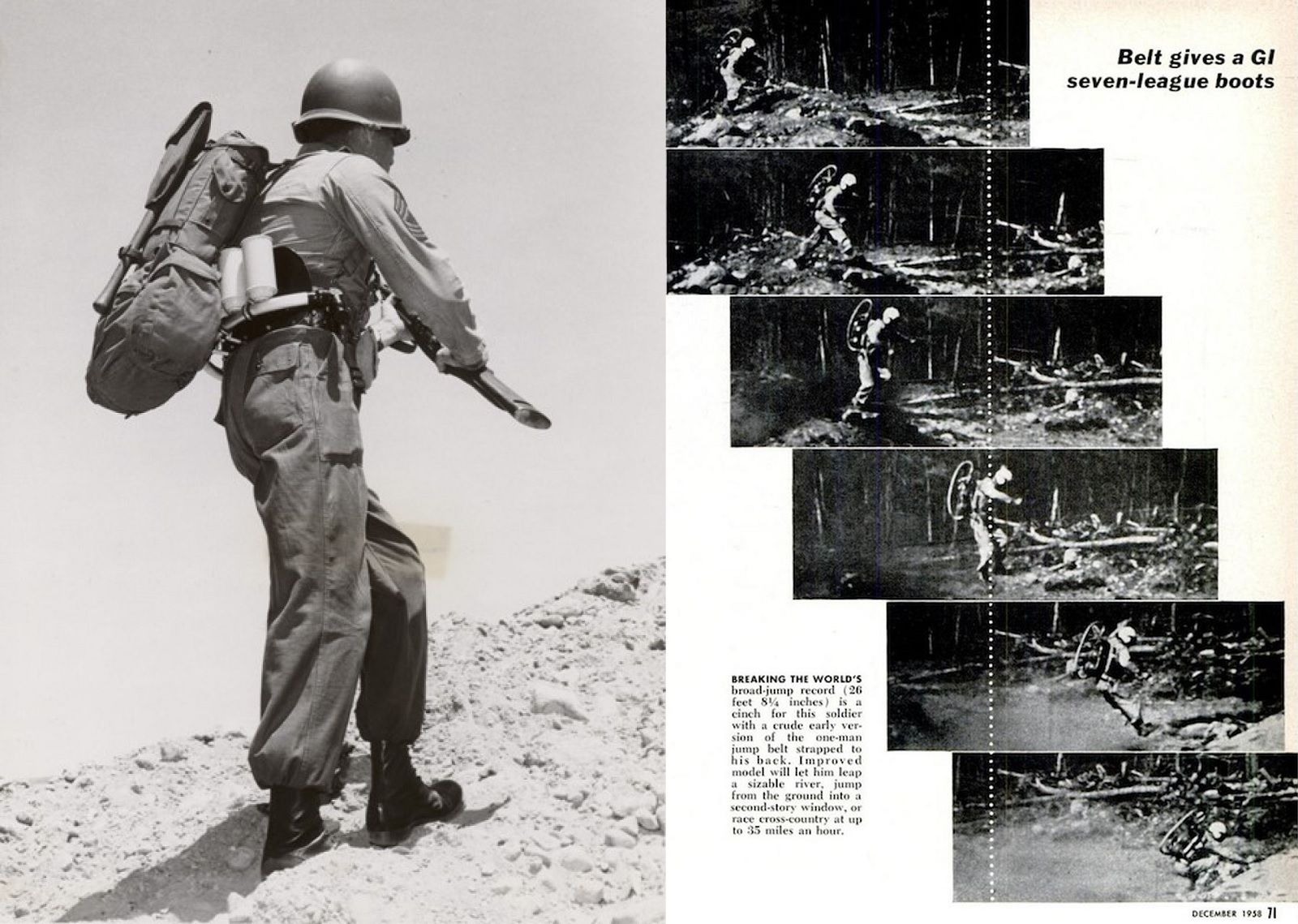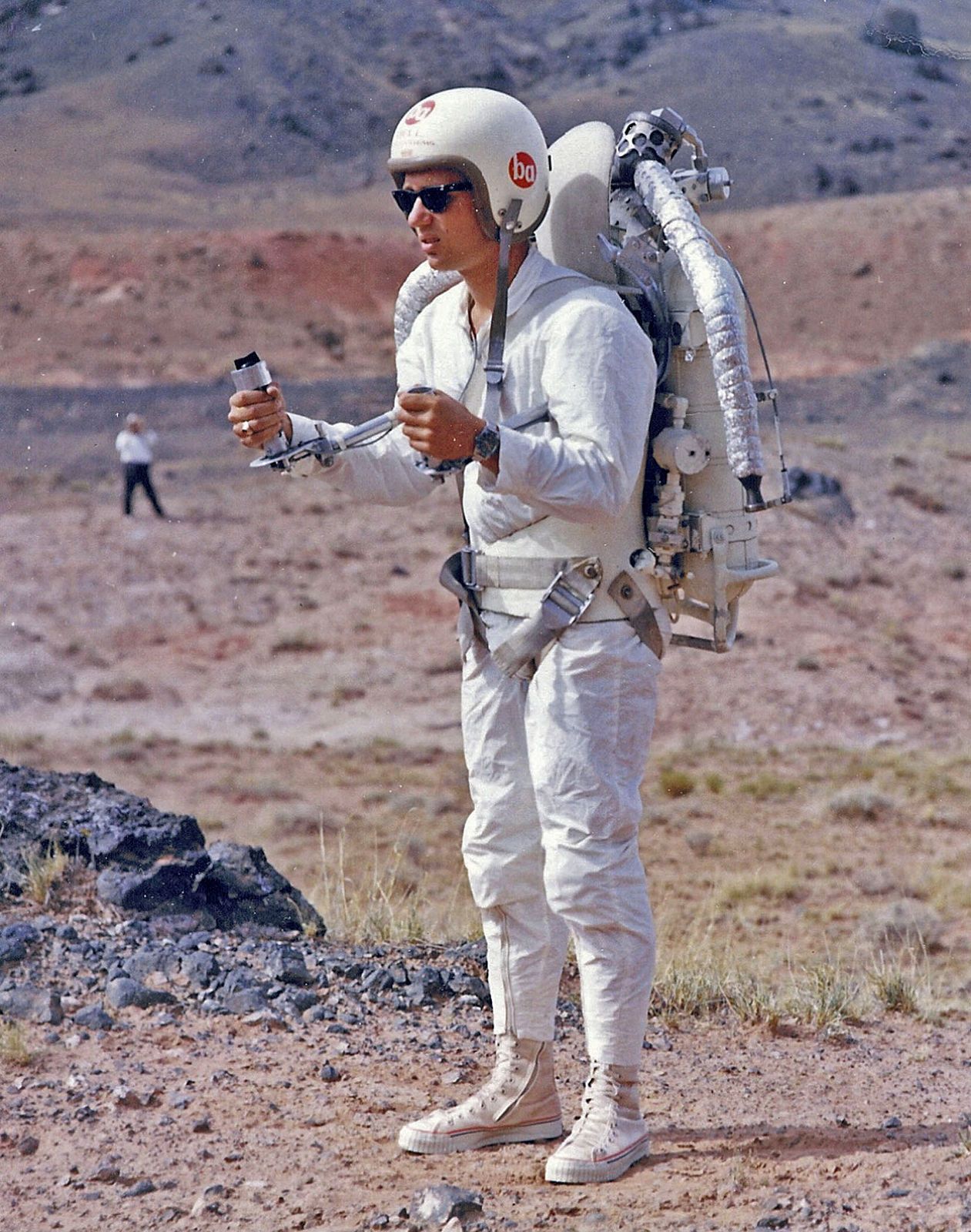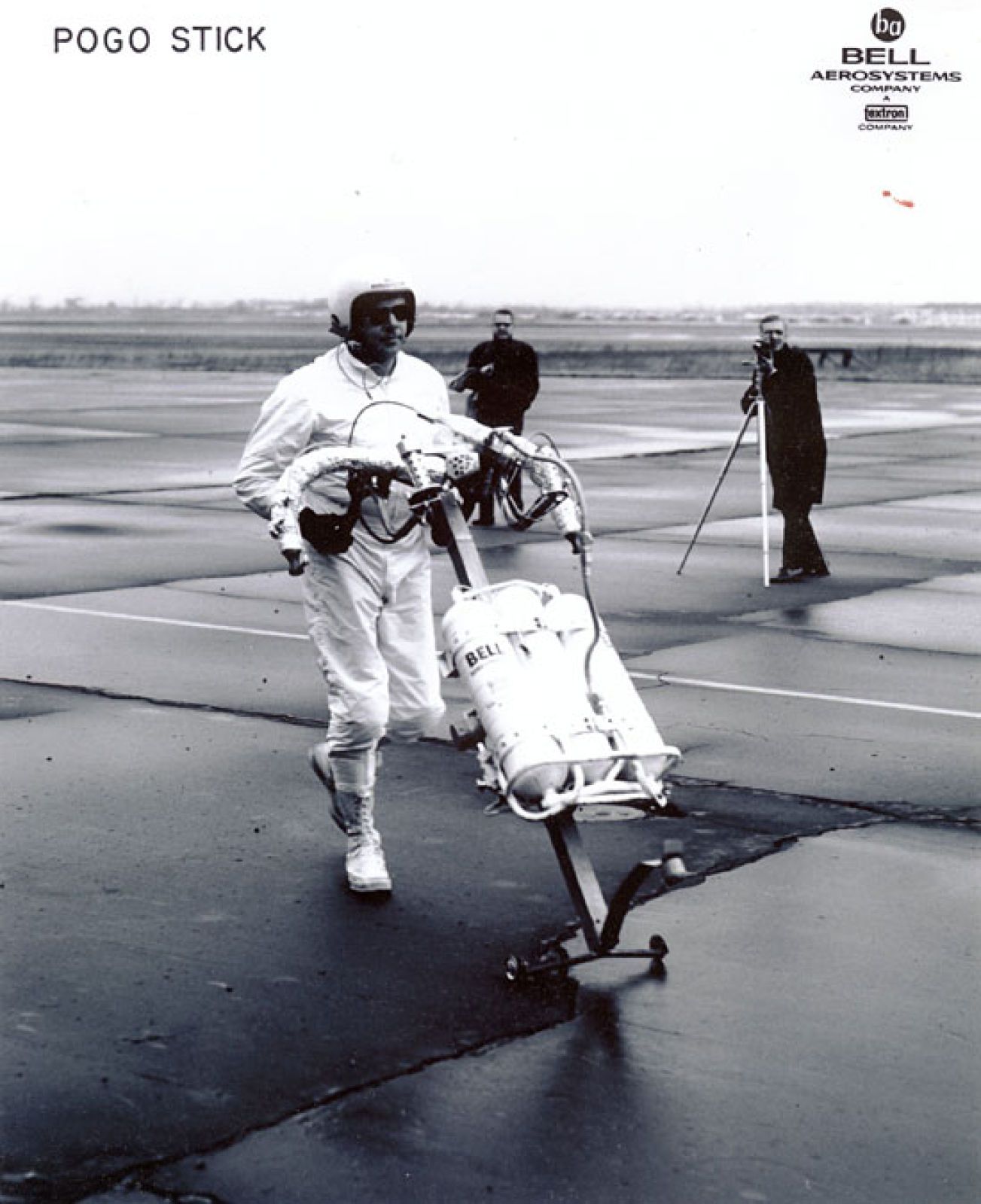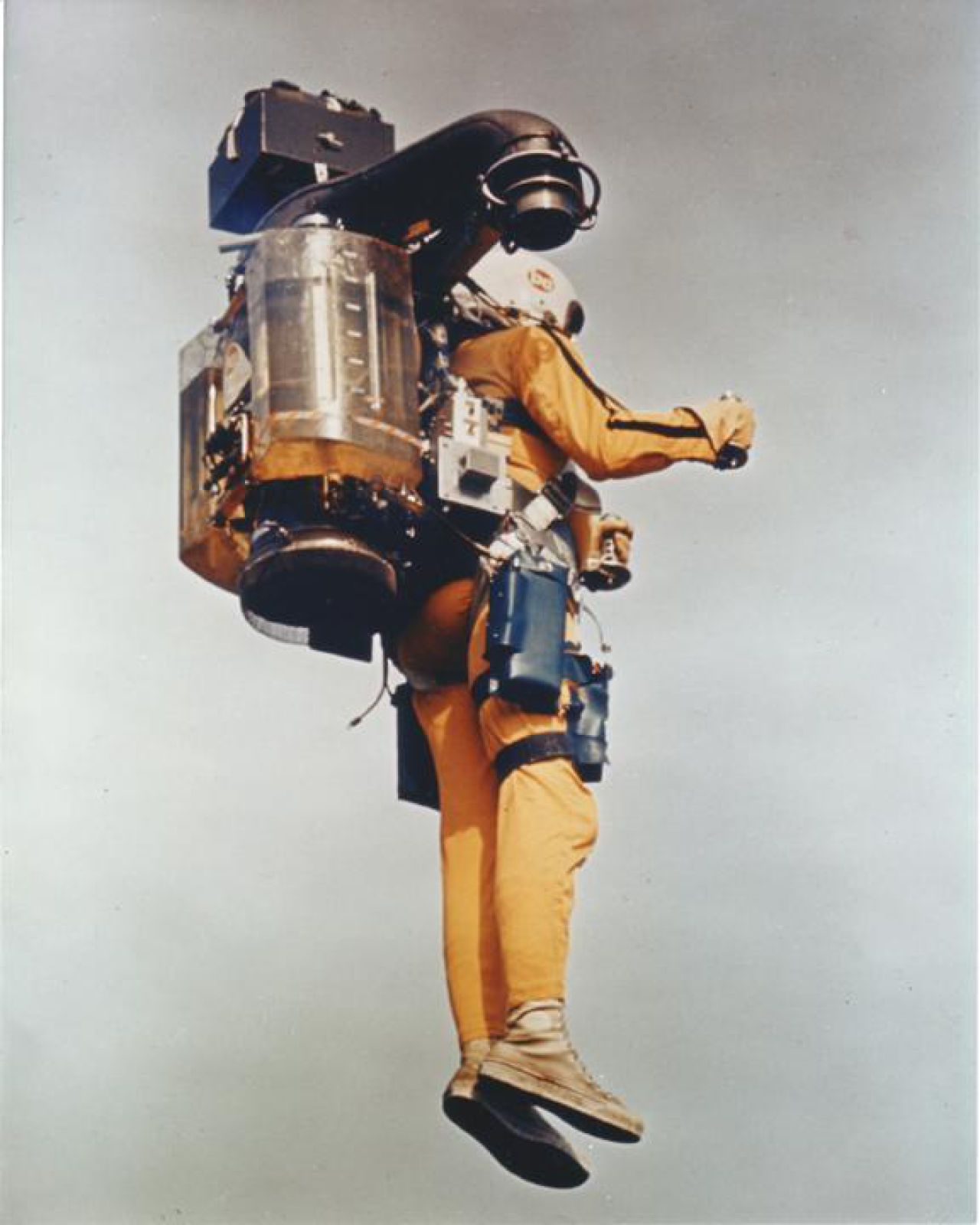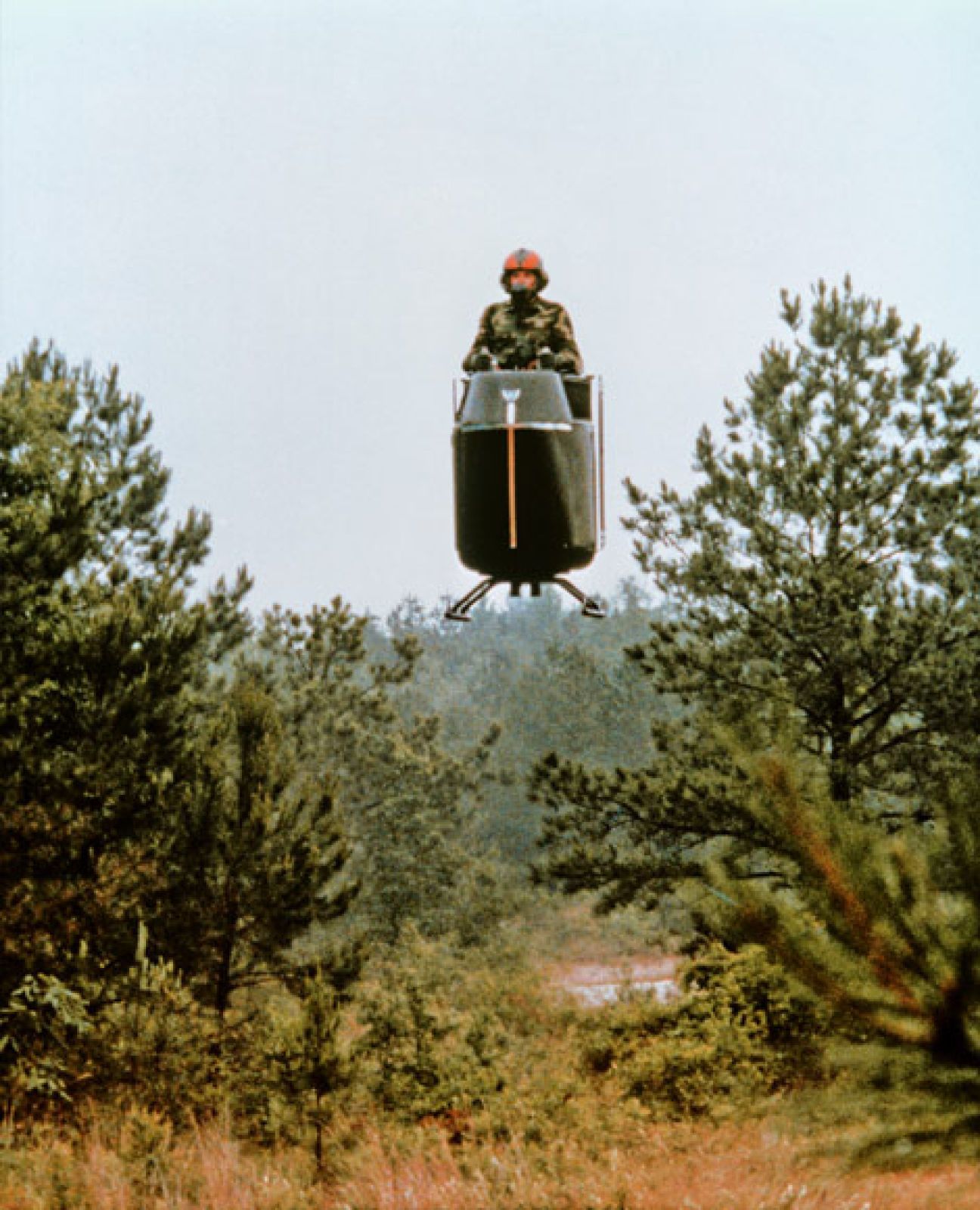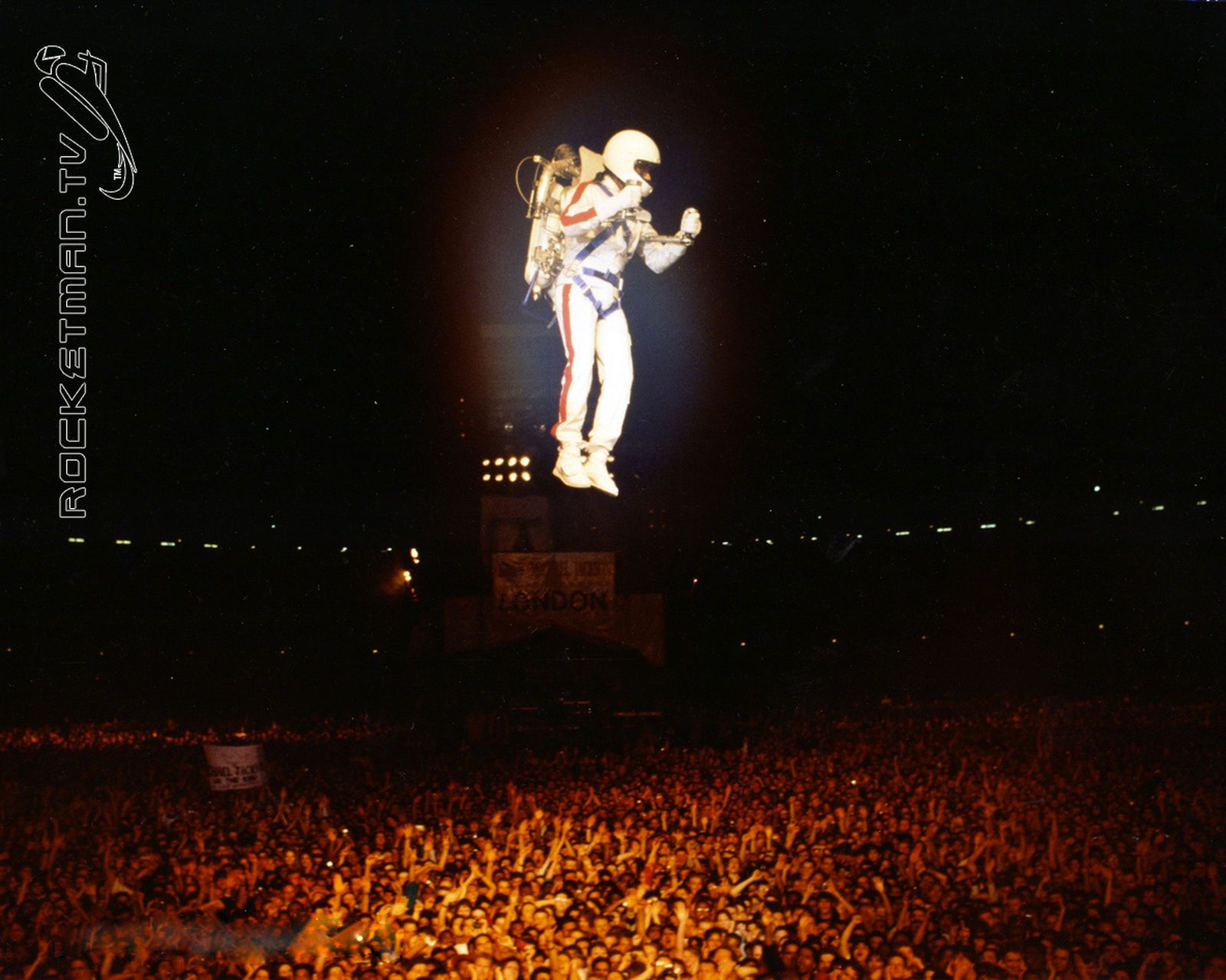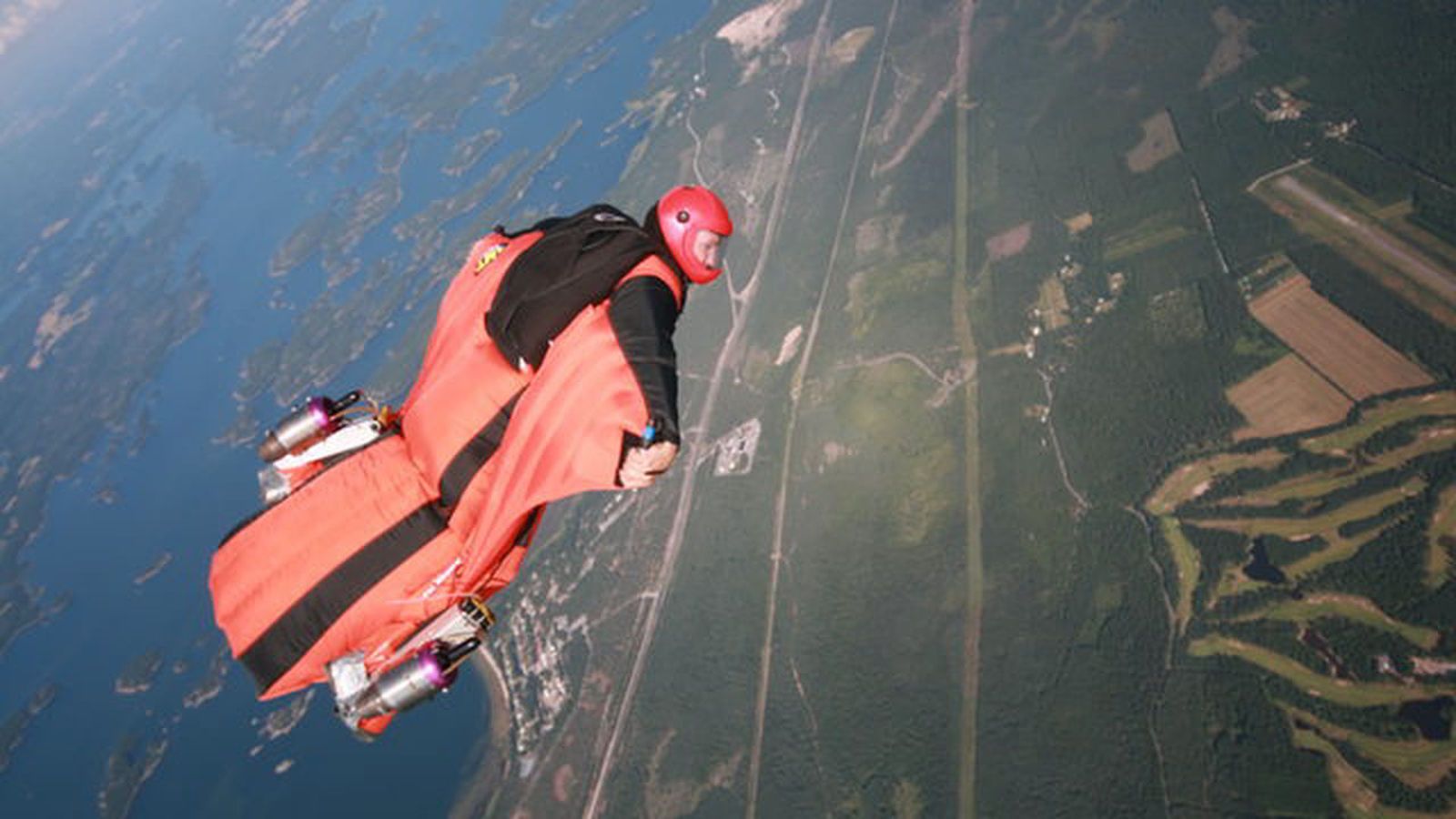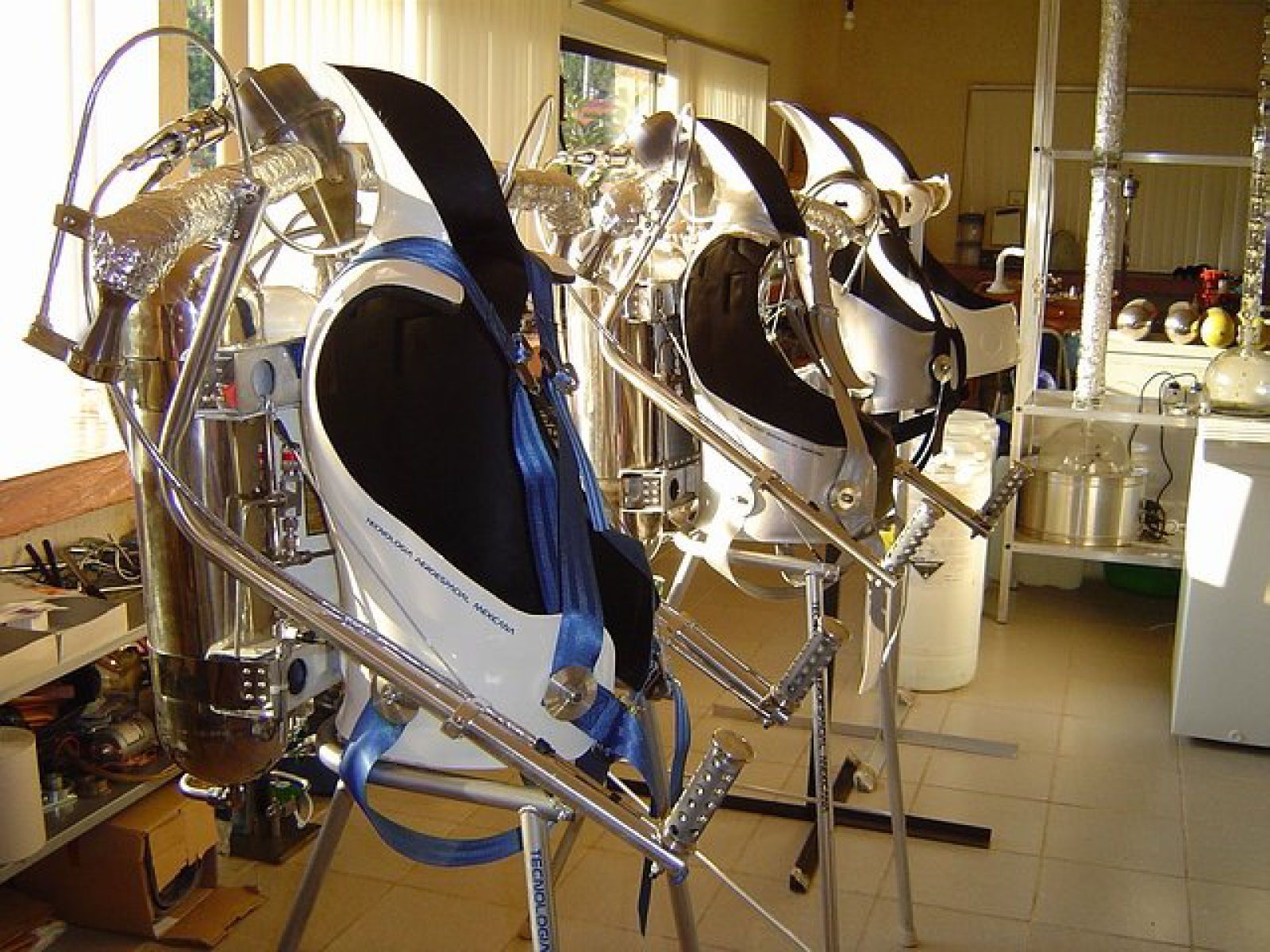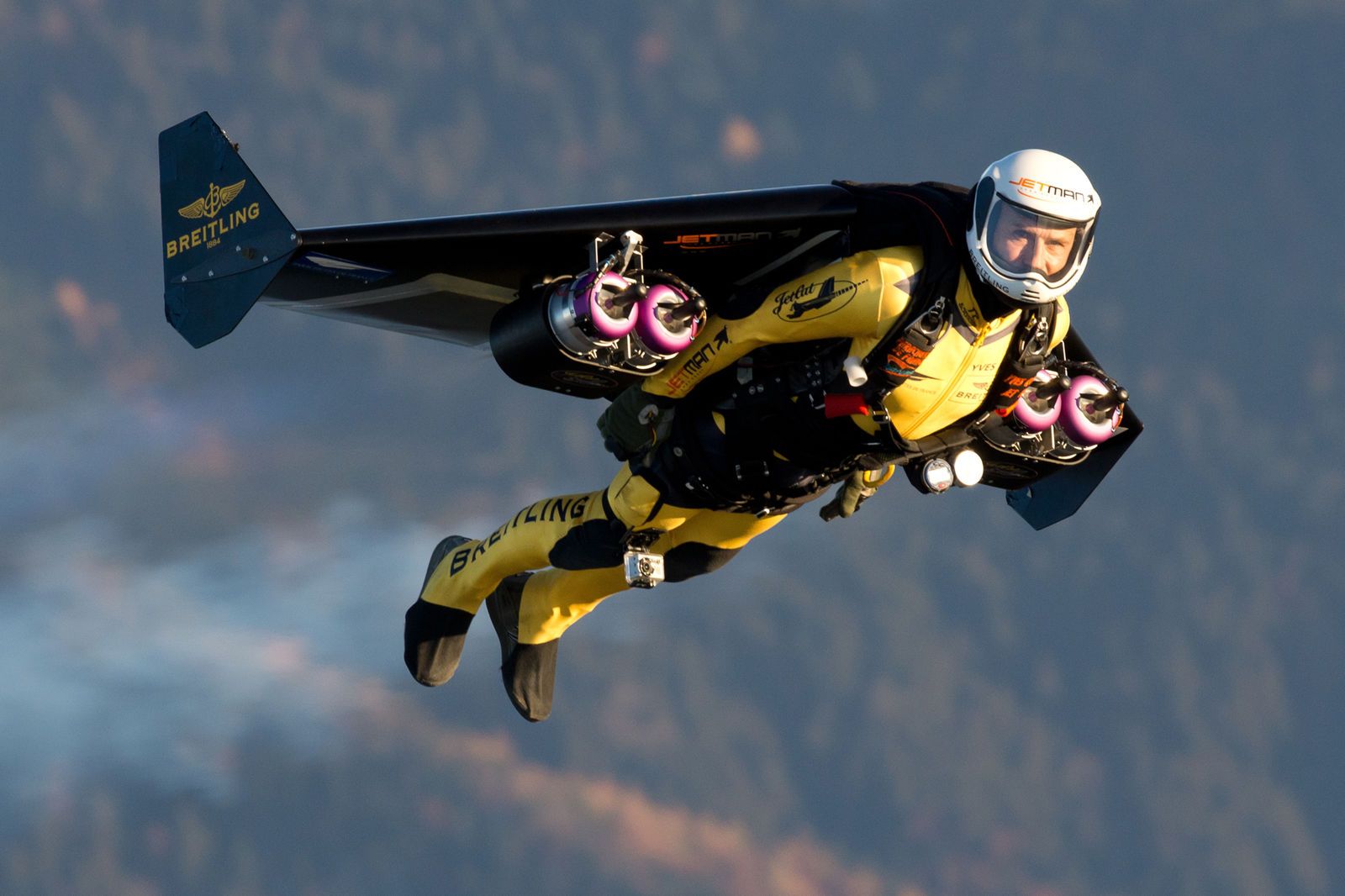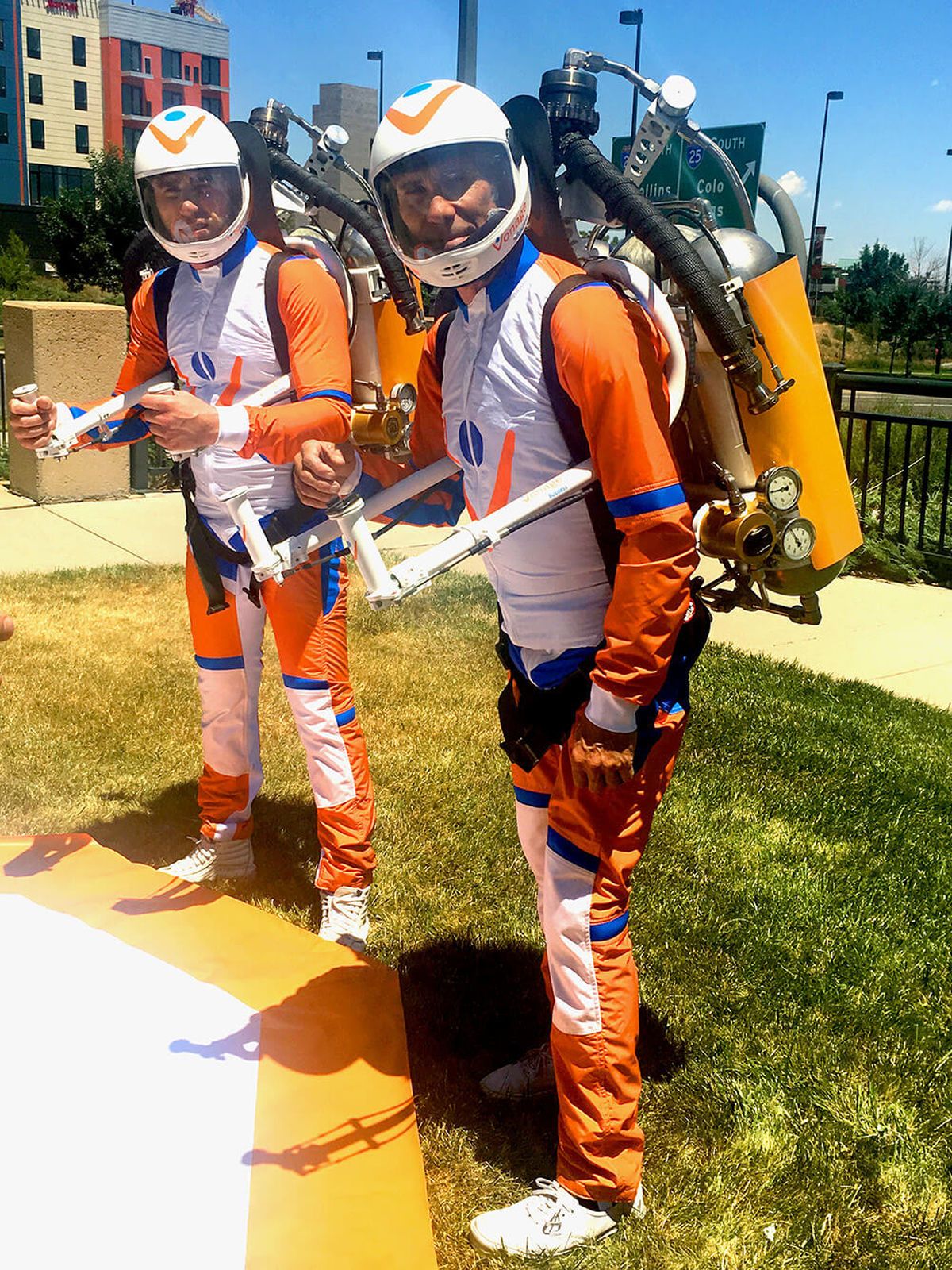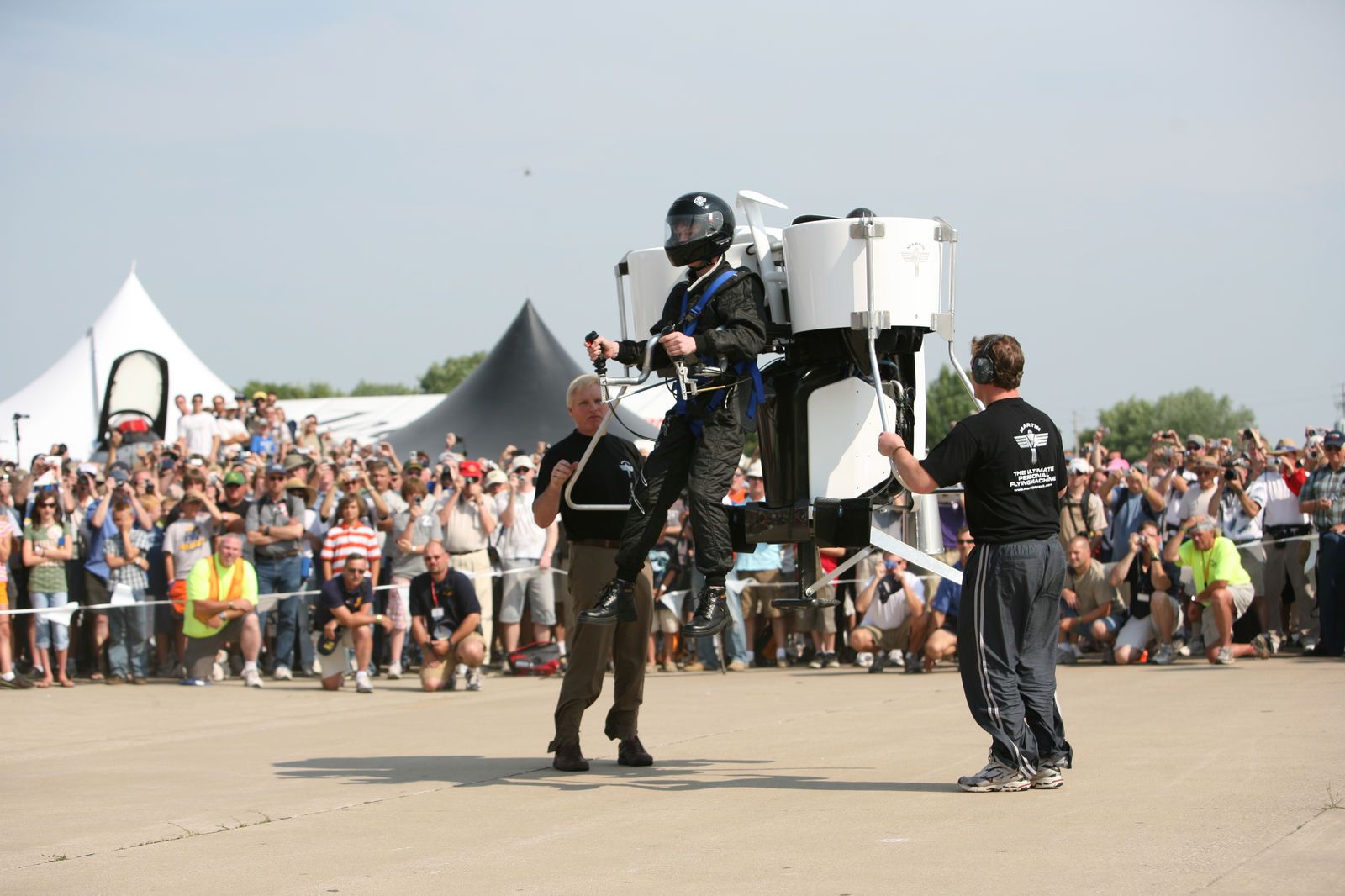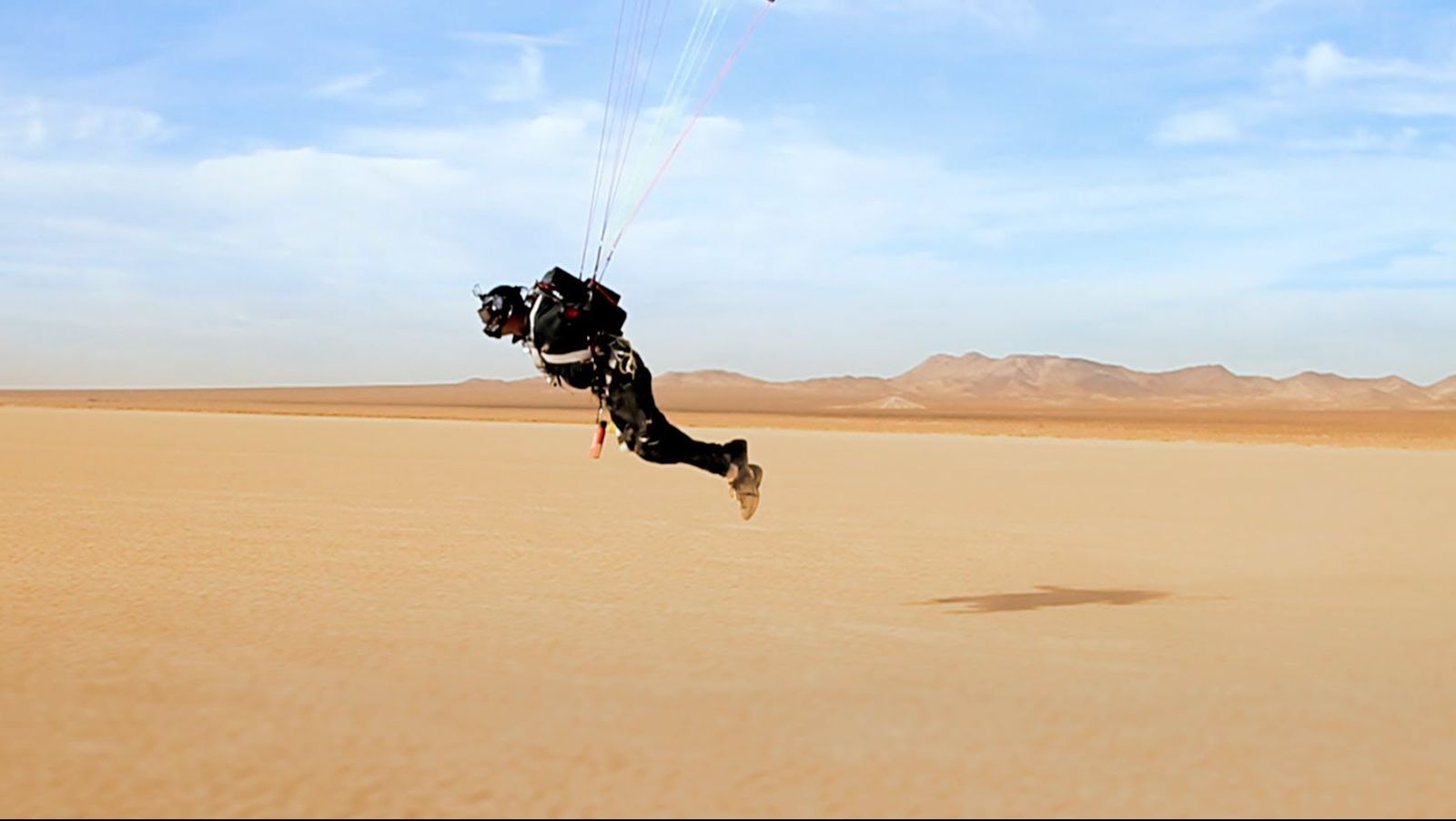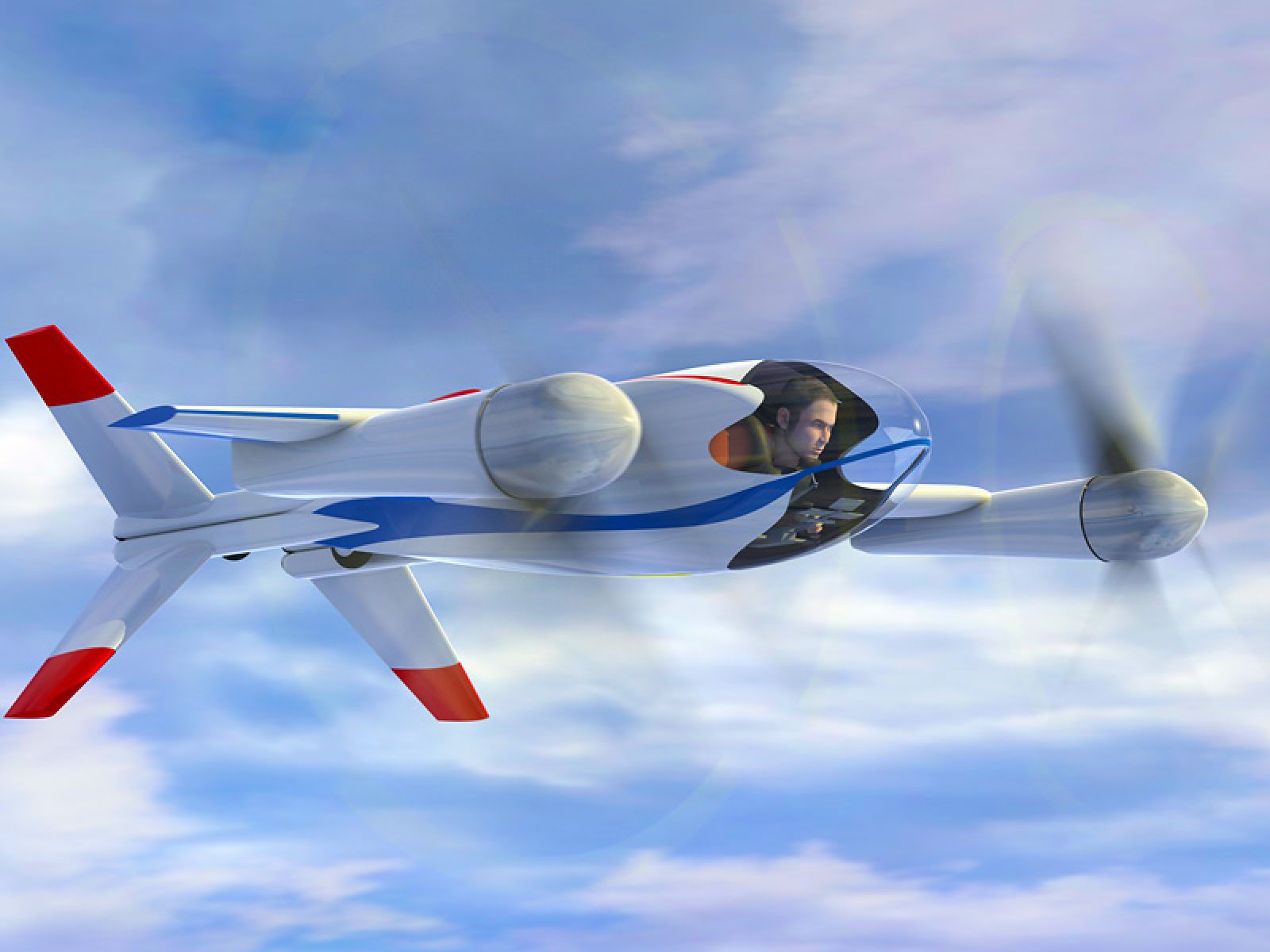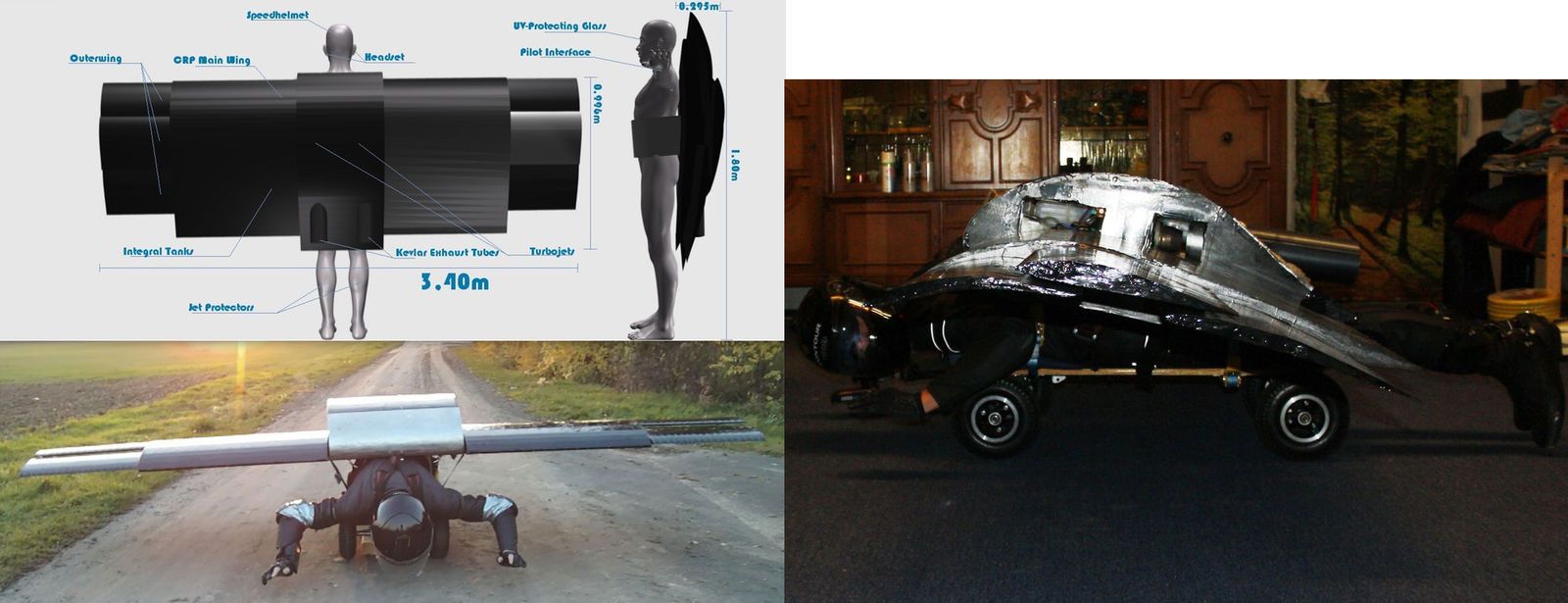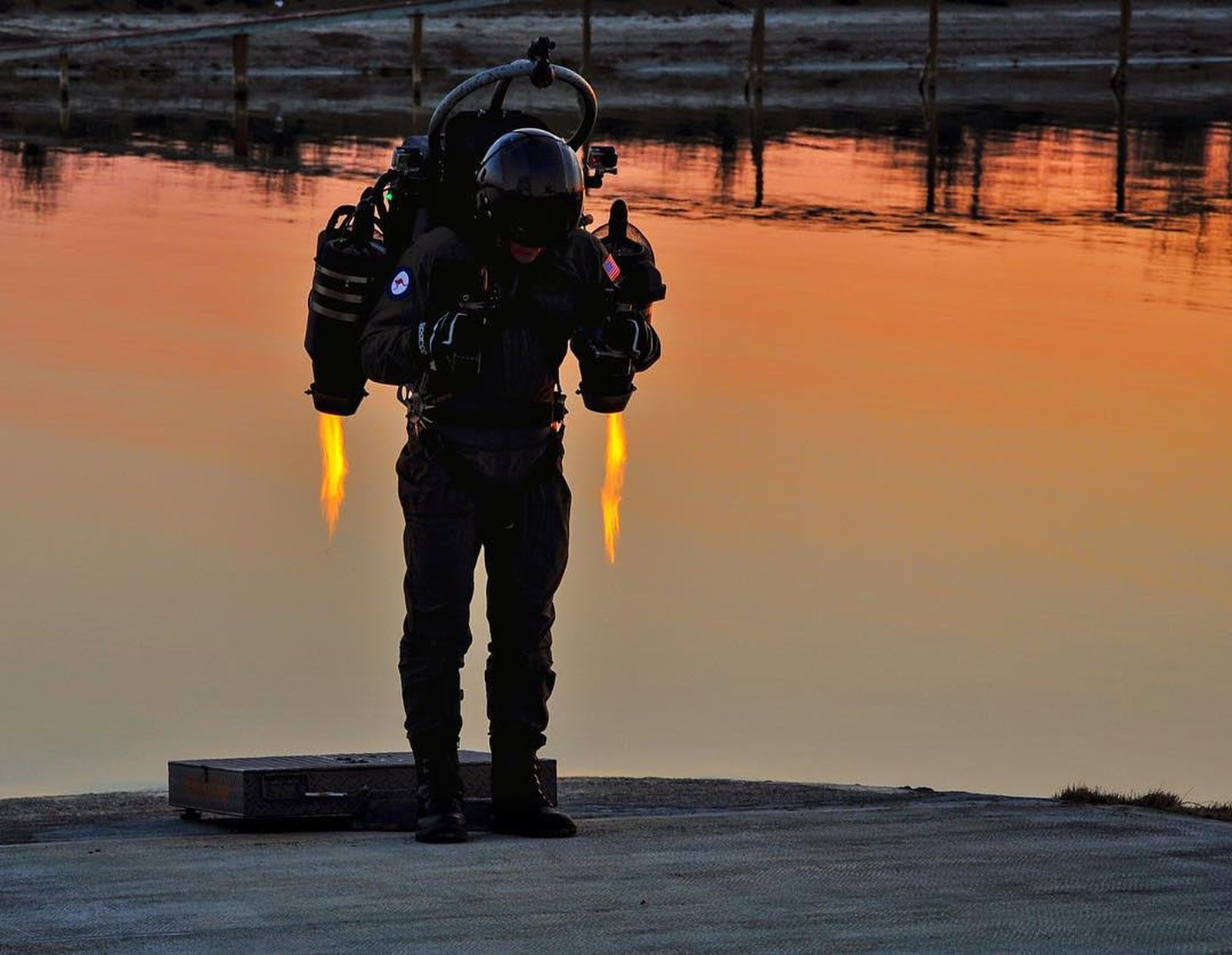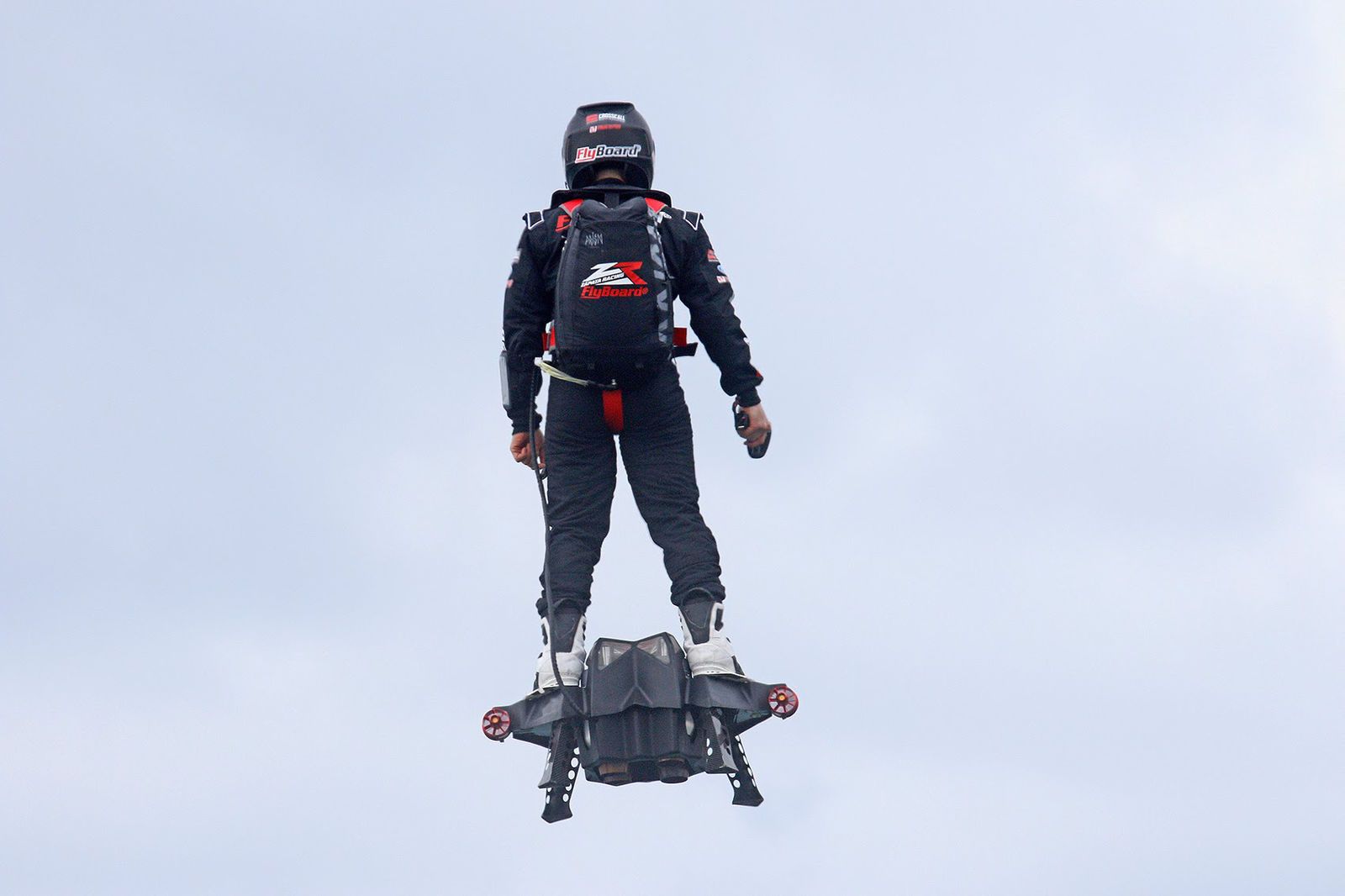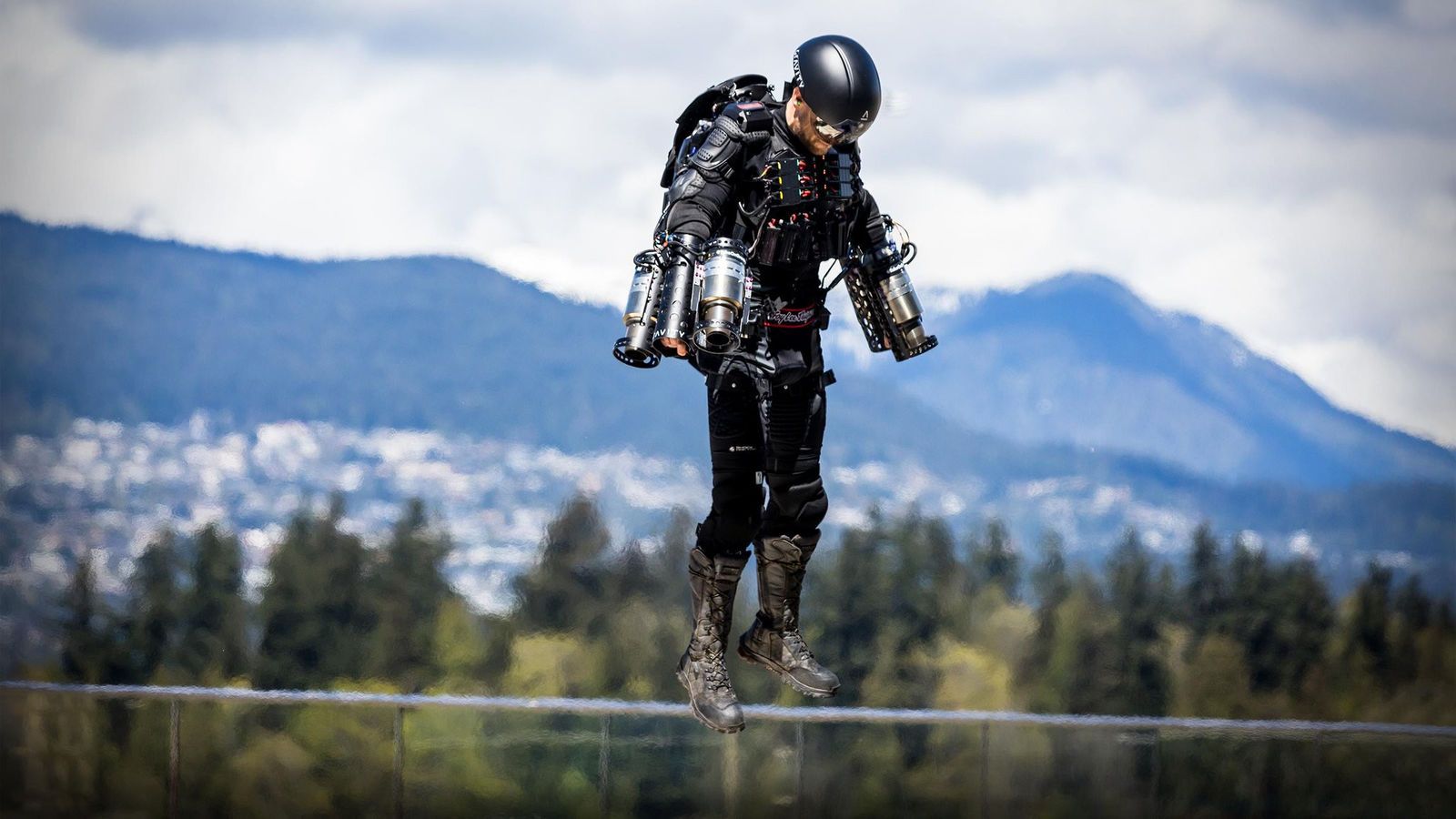In 2017, British inventor, Richard Browning set a new record for fastest flight in a body controlled jet engine powered suit. Using an Iron Man-like jet suit he managed to achieve a speed of over 32 mph over the waters of Lagoona Park in Reading, UK.
This effort set a new flight record which made it into the Guinness World Records and yet, it is just one in a long line of experiments by mankind into achieving perfect personal flight. This passion for jetpacks and suit powered flight started off in the world of Science Fiction but quickly became a dangerous, if enthralling reality.
From the pages of science fiction to the modern day we look back at the history of man’s quest for personal flight over the last 70 years. Come with us as we blast into the sky and into the hearts and minds of inventors everywhere.
The Skylark of Space (1928)
1928 is likely the first year that man dreamt of powered flight and put pen to paper to create the vision. In a science fiction novel entitled "The Skylark of Space" writer Edward E. Smith envisions a future in space where man discovers a new element which allows him to achieve the wonder of flight.
This vision is seen on the cover of a magazine called "Amazing Stories" from August 1928 which also included works from H.G. Wells. Though perhaps not the first time mankind had thought of flight, it certainly would be the inspiration for future jetpack based flight.
King of the Rocket Men (1949)
A few years after The Skylark of Space, a jetpack powered hero made his way onto the silver screen in the form of "Rocket Man".
A scientist created a sonic-powered rocket backpack, jacket and helmet to help him battle the evil villain Dr. Vulcan. The escapades of the Rocket Man were released in 12 chapters in 1949 and would go on to inspire the minds of future generations.
Thunderball (1965)
In the 1960's, fiction and reality collided, when Bell Aerosystems "Rocket Belt" was used by James Bond in Thunderball. After Bond assassinates Jacques Bouvar he uses the jetpack to make his escape with a short flight over the top of a château and out of the reach of the enemy.
A fantastic use of a jetpack that thrilled the masses, but the rocket belt itself actually had a very limited use as it was only capable of around 21 seconds of flight. This early jetpack system also cost over $200,000 to develop and ended up being cancelled as a project due to costs skyrocketing.
Rocketeer (1982)
Jetpacks would continue to be popularised on the big screen and in science fiction and in 1982, the Rocketeer proved such a popular comic book series that it also made its way into video games and movies.
De Lackner HZ-1 Aerocycle (1955)
Personal flight hasn't always been about jetpacks. Over the years, there have been plenty of different designs with varying technologies all intended to help man to take to the skies. Though these forms of transport might have their origins in science fiction, science fact is also pretty interesting.
In 1954, the HZ-1 Aerocycle was created for the US Army as a one-man "personal helicopter" that was intended to be easily flown by infantrymen as an aerial reconnaissance vehicle. Unsurprisingly though, it never made it to the battlefield as a number of crashes caused the project to be abandoned. We're not surprised as it looks pretty dangerous.
The design was pretty interesting though. Flight was intended to last for up to 40 minutes after just 20 minutes training on how to fly the vehicle. The HZ-1 Aerocycle could reach speeds of 75 mph with a 15-mile range and a flight ceiling of 5,000 feet.
Jetvest (1957)
During the years that followed WWII, Thomas T. Moore worked alongside Dr. Werhner von Braun. While the latter scientist was working on ways to send a man to the moon in a rocket ship, the former was trying to fathom the technology to apply rockets to a man for personal flight.
With a small amount of funding from the army, he managed to create working prototype known as the "Jetvest" and flew it for the first time in 1952. Funds, unfortunately, dried up shortly afterwards and the project had to be abandoned.
Nevertheless, you can see it being wonderfully modelled here by David H. Ward.
Hiller VZ-1 Pawnee (1957)
The Hiller VZ-1 Pawnee was another design of personal flight vehicle that used rotors to power upward flight.
It was unique in many ways, not least of which was the directional control powered by the pilot their shifting body-weight. The original concept for this design started life in the 1940's but would not take flight until 1955. Various prototypes were created but never put into full production.
Project Grasshopper Jump Belt (1958)
The Rocket Belt came about as a US Army project aimed at allowing soldiers to be able to leap over small distances and move at faster speeds to get them out of harm's way.
In 1958, the Jumpbelt was demonstrated at Fort Benning and allowed a person to be able to jump 20 feet into the air and dash 300 feet in just nine seconds. Though not supporting actual flight, the jumpbelt project was certainly an interesting start into personal transport.
Bell Aerosystems Rocket Belt (1961)
If this one looks familiar it's because it's the early prototype of the version used by James Bond in "Thunderball".
Development began in the 1950's but it wasn't until 1961 that it was demonstrated burning five gallons of fuel for just 21 seconds of flight. Alas, the design didn't impress and it was abandoned until being revived by a more efficient and manageable design in the 1990's.
Bell Pogo (1968)
The Bell Aerosystems Company continued building different models of jetpacks in later years and the Bell Pogo system was tested in the years between 1967 and 1969.
This model was originally developed for NASA and was intended as a means of transport during the Apollo missions to allow astronauts to get about on the moon. NASA decided that the Rover car was a safer option and the Bell Pogo was instead adopted by the US Army.
Jet Flying Belt by Bell Aerosystems (1969)
With advancements in missile technologies during the 1950's and 1960's, there were experiments into putting missiles engines into personal jetpacks. The Jet Flying Belt was the result of these tests and backed by a $3 million fund from the Advanced Research Projects Agency (ARPA).
Testing in 1969 showed the Jet Flying Belt was capable of propelling the user seven metres into the air at a speed of just under 30 mph. This jetpack was capable of 25 minutes of flight and was theoretically able to manage a top speed of over 80 mph. Despite successful testing, the company sold all the technology and patents to Williams International after not getting any further with these sort of projects.
Williams International WASP & X-Jet (1970-1982)
Also known as "The Flying Pulpit" or "the WASP", the Williams International X-Jet was a light-weight Vertical Take Off and Landing (VTOL) system that used a modified aircraft engine to power flight.
This design allowed the user to take off and land with ease as well as being capable of moving at high speeds (up to 60 mph), hover and rotate on its axis. The X-Jet was also able to fly for around 45 minutes making it one of the most capable personal flight vehicles of its time.
NASA Manned Manoeuvring Unit (1984)
In 1984, NASA launched a jetpack technology in the form of the Manned Manoeuvring Unit.
This new system allowed astronaut Bruce McCandless to venture further away from his ship than any astronaut had before him. His 320-foot journey away from the Orbiter was a new record for human travel and a taste of the future of space exploration.
Powerhouse Productions Rocketbelts (1994)
Back down on Earth, 10 years later, the Powerhouse Productions Rocketbelt was used by King of Pop Micheal Jackson on his Dangerous World Tour.
This rocketbelt was capable of 30 seconds flight and no doubt impressed the audiences with suitably dangerous flights across the stage.
Turbojet engined wing suit (2005)
In 2005, Visa Parviainen took a leap of faith from a hot air balloon in a turbojet engined wingsuit. The flight was powered by the two small engines attached to his feet, but the design of the wingsuit also supported a longer and more successful flight.
Tecaeromex Rocket Belt (2006)
The Tecaeromex Rocket Belt was released in 2006 and pitched by the company as a fully customised Rocket Belt design that could be built in a variety of layouts and with various options to meet the needs of the user. This included different rocket engines and frame shapes to account for the weight and size of the pilot.
This was perhaps the first time that the general public could have their own jetpack if they could afford one.
Yves Rossy's Jet Wingpack (2006)
Swiss military-trained pilot and jetpack enthusiast Yves Rossy became "Jetman" in 2006 when he took to the skies using a carbon-fibre winged jet engine powered suit.
This jetpack was just one of a series of experimental jetpacks Yves Rossy had developed and built himself. Years later Jetman would demonstrate the power of his wingsuit when he flew in a choreographed demonstration in the skies over Dubai alongside an Emirates Airbus.
Jet Pack H202 (2007)
The Jet Pack H202 was the culmination of the development that came about thanks to the passion of Troy Widgery who had a childhood dream of owning his own jetpack. The goal here was the create a jetpack that was faster, lighter, more efficient and capable of longer flight than the original Bell jetpack it was inspired by.
The resulting jetpack was capable of 33 seconds of flight at a max speed of 80mph.
Martin Jetpack (2008)
In 2008, the Martin Jetpack was launched and represented a change in the design of jetpacks in several different ways. This Jetpack not only combined the traditional backpack-like design with a platform system but it also allowed for both manned and unmanned flight.
The Martin Jetpack was promised to be the safest and most practical system to use and included a variety of safety features such as a parachute. The fact that it could be controlled remotely also meant that it could be used as a mule for transportation or even in life-saving operations.
Troy Hartman's Jetpack (2008)
Troy Hartman's personal flight ambitions started with a wingless jetpack with two turbojet motors strapped to his back. Experimenting with other designs and applications (that included using a jetpack for skiing) he would later add a parafoil and create this jetpack in 2008.
Hartman demonstrated that an individual with enough passion and knowledge could create a personal flight vehicle without spending millions.
NASA Puffin (2010)
Stepping away from the classical jetpack design for a moment, we see the wonder that is the "Puffin" - a personal flight vehicle that's essentially a miniature aeroplane. This unusual looking vertical take-off and landing vehicle was little more than a concept, but certainly looks a look safer than many of the other flight vehicles on our list.
The design was intended to be lightweight and fast, with electric motors built to drive the personal flight vehicle at cruising speeds of 150mph to a maximum distance of around 50 miles before it needed recharging. Wouldn't it be incredible to take one of these for your daily commute?
Jetlev - Water powered pack (2012)
Unlike conventional jetpacks and personal flight vehicles, the Jetlev uses a propulsion engine powered by water. This design meant that the Jetlev could deliver vast amounts of controllable power much more efficiently than traditional gas-powered engines.
Of course, use is limited, but the Jetlev design gives the public access to a jetpack experience that would likely otherwise be well out of their reach.
Project Skyflash (2013)
With a small budget and big dreams, German Fritz Unger and friends went about building their own jet-powered winged suit dubbed "Skyflash". Inspired by Yves Rossy's "Jetman" wingsuit, Skyflash was intended to go one better by allowing a ground take-off rather than needing to be dropped off from an aircraft.
The 11 foot long wings would allow for a greater surface area to assist the take-off and stable flight. Skyflash was ambitious and had some impressive stats. It was capable of a cruising speed of 78mph and could reach heights of 3,600 metres as well as reach a distance of 62 miles and stay in the air for as much as an hour.
JB-9 by JetPack Aviation (2015)
Jetpack Aviation's personal flight craft was unique in several ways, not least of which was the approval for public flight the jetpack acquired from the American Federal Aviation Administration (FAA).
The turbine-powered jetpack was also said to be safe, reliable and simple to operate. The JB-9 jetpack has since been used for private events, military and industrial contracts and more.
Flyboard Air (2016)
In 2016, a new design of personal flight vehicle took to the air that combined man's love for both jetpacks and hoverboards into one single device.
The Flyboard Air was a powerful hoverboard capable of reaching heights of 50 metres and travel a distance of 2,252 metres. The simple design included a remote control for flight controls, a backpack full of homemade aviation jet fuel and four turbo engines to power flight, plus two more engines for stabilisation. This little hoverboard has 1,000hp and plenty of promise.
The Flyboard Air caused waves of interest on the internet and was so brilliant it was often dismissed as a hoax, yet the video of the flight has since clocked up over eight million views.
Gravity (2017)
This personal flight suit is probably the closest any man has come to Iron Man-like flight with wrist-mounted jet engines.
The Gravity flight suit includes an exoskeleton design that allows for vertical take off and safe high-speed flight.
Royal Navy jetpacking (2021)
In 2021 you might have seen the British Royal Navy using Gravity Industries jetpack for testing flying Marines from ship to ship.
The footage was pretty impressive though we wonder how effective the use would be in real life where the soldier would have no weapon to return fire while in flight.

